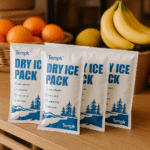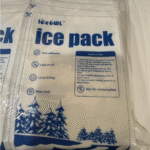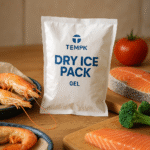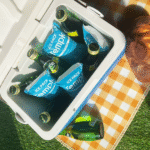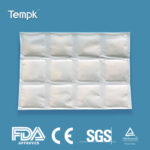Pharma Cold Chain Logistics Solutions for 2025
Diperbarui: November 26 2025
Keeping temperature sensitive medicines safe has never been more critical. Pharma cold chain logistics solutions ensure that life saving vaccines, biologics and cell therapies arrive potent and intact. Di dalam 2025, demand for these solutions is soaring as the biopharma market embraces cell and gene therapies, personalised medicines and global vaccination campaigns. Recent data shows that temperature controlled logistics represented nearly 18 % of biopharma logistics spending in 2020 and the sector continues to expand rapidly. This guide explains why robust cold chain strategies matter, what technologies drive success, and how you can safeguard your products.

Why are pharma cold chain logistics solutions essential in 2025? – exploring regulatory expectations and the consequences of temperature excursions.
How do temperature sensitive drugs impact logistics? – understanding storage ranges for vaccines, biologics and cell therapies.
What components make up a reliable cold chain? – covering packaging, mengangkut, monitoring and qualified personnel.
Which technologies are transforming the cold chain? – examining automation, IoT, blockchain, AI dan pengemasan berkelanjutan.
What are the latest trends and market insights for 2025? – highlighting industry growth, emerging therapies and sustainability drivers.
Why Are Pharma Cold Chain Logistics Solutions Essential in 2025?
Robust cold chains protect patient safety and business value. Temperature excursions can degrade vaccines and biologics, causing loss of efficacy and significant financial waste. Organisasi Kesehatan Dunia (SIAPA) estimates that hingga 50 % of vaccines are wasted globally each year, largely due to inadequate temperature control and logistics. With cell and gene therapies often requiring ultra cold conditions below –80 °C, even brief deviations can compromise product integrity. Regulatory frameworks such as Good Distribution Practice (PDB) demand validated systems that maintain temperature integrity and traceability. Meeting these expectations is vital for public health and for avoiding costly recalls or liability.
Achieving compliance involves more than equipment. Distributors must ensure that medicines are authorised, stored correctly, protected from contamination and delivered to the right recipient on time. After temporary pandemic flexibilities were phased out, European regulators expect full on site GDP inspections again from 2025. These heightened expectations mean that companies need to invest in comprehensive cold chain programs that combine technology, training and quality management.
Temperature Sensitivity of Modern Medicines
Advanced therapeutics drive cold chain complexity. Terapi sel dan gen (CGTs) require deep frozen or cryogenic conditions, dengan a projected CGT market exceeding $81 miliar oleh 2029. GLP 1 weight loss drugs must remain between 2 °C dan 8 ° C. to stay effective. Sementara itu, rising demand for vaccines, insulin and biologics necessitates reliable refrigeration across global supply chains. Real time data shows that 20 % of temperature sensitive healthcare products are damaged during distribution due to poor cold chain management.
| Kisaran suhu | Examples of Products | Arti Praktis untuk Anda |
| Lingkungan yang terkendali (15–25 °C) | Tablet, some antibiotics | Requires insulated packaging to avoid temperature spikes; simpler logistics but still traceable. |
| Didinginkan (2–8 ° C.) | Vaksin, insulin, GLP 1 drugs | Must stay within a narrow band; delays or poor packaging can render products ineffective. |
| Beku (–20 °C hingga 0 ° C.) | Certain biologics, produk darah | Needs robust insulation and phase change materials; monitoring is crucial to avoid thawing. |
| Deep frozen/cryogenic (< –80 °C) | Terapi sel dan gen, Vaksin mRNA | Requires specialised freezers and dry ice or liquid nitrogen; even short excursions can destroy potency. |
Tips dan nasihat praktis
Assess your product’s stability profile: Work with your quality team to define acceptable temperature ranges, excursion durations and contingency plans.
Berinvestasilah dalam pelatihan: Human error is a leading cause of excursions. Regularly train staff on loading practices, monitoring equipment and corrective actions.
Implement validated packaging: Use phase change materials and vacuum insulated panels to maintain stable temperatures during unexpected delays.
Create emergency SOPs: Develop standard operating procedures for responding to excursions, termasuk karantina, documentation and root cause analysis.
Contoh dunia nyata: During the Pfizer–BioNTech COVID 19 vaccine rollout, ultra low temperature requirements (–70 °C) posed significant logistics challenges. The company used GPS enabled thermal shippers, routine dry ice replenishment and continuous digital monitoring to ensure safe delivery. This case demonstrates that proactive monitoring and validated packaging are essential for new therapies.
Key Components of Pharma Cold Chain Logistics Solutions
Maintaining product integrity requires a holistic approach. Pharma cold chain logistics solutions are built on four pillars: kemasan, angkutan, monitoring and skilled personnel. Each component must work together to prevent temperature excursions, contamination and delays.
Advanced Packaging Technologies
Packaging is your first line of defence. Modern solutions employ insulation, bahan perubahan fase (PCMS) and smart cooling systems to maintain desired temperatures even without external power. Reusable gel packs, dry ice and liquid nitrogen are common cooling agents. Untuk produk yang sangat dingin, freezer kriogenik portabel maintain temperatures as low as –80 °C to –150 °C and provide real time alerts when deviations occur.
| Solusi Pengemasan | Keterangan | Manfaat praktis |
| Bahan Perubahan Fase (PCMS) | Materials that absorb or release latent heat at target temperatures. | Stabilises temperature during transit; reduces the need for external power. |
| Panel Terisolasi Vakum (VIP) | High performance insulation panels with minimal thermal conductivity. | Extend shipment duration without dry ice; ideal untuk jarak jauh. |
| Cryogenic Freezers | Portable units capable of –80 °C to –150 °C storage. | Supports cell and gene therapy shipments and remote clinical trials. |
| Reusable Gel or Water Based Ice Packs | Packs that maintain 2–8 °C or below. | Water based ice packs emit 39 % less CO₂ during production compared with gel packs and save 5.7 tonnes of CO₂ per million packs. |
| Eco friendly Insulation Materials | Paper based liners, fibre composites and recyclable plastics. | Reduce single use plastic waste and align with circular economy goals. |
Transportation and Handling
Transportation is more than moving goods; it’s about maintaining conditions from door to door. Passive cooling solutions (such as insulated containers) are complemented by sistem aktif—refrigerated trucks, airfreight containers and temperature controlled warehouses. Di dalam 2024, transportation services accounted for 46.3 % of the healthcare cold chain logistics market. Air freight holds 41 % market share and is projected to grow at a 13.7 % CAGR melalui 2030.
To minimise risks:
Rencanakan rute dengan hati-hati: Use predictive analytics and AI to avoid traffic, customs delays and extreme weather.
Use GPS enabled shippers: Real time location and temperature data enable immediate intervention during deviations.
Maintain contingency stock: Keep backup coolant, dry ice or portable freezers for unexpected delays.
Monitor hand offs: Ensure that responsibility is clear at transfer points between carriers, warehouses and clinics.
Continuous Monitoring and Traceability
Monitoring is the nervous system of the cold chain. Internet of Things (IoT) sensor, data loggers and wireless communication provide end to end visibility. Misalnya, Sensor cerdas yang mendukung IoT alert users to unsafe temperatures and track GPS positions in real time. Real time tracking helps companies optimise routes, prevent spoilage and comply with regulators.
Teknologi yang sedang berkembang seperti blockchain enable immutable records of temperature conditions and chain of custody, reducing tampering and improving transparency. Integration with cloud dashboards gives quality assurance teams immediate access to data, facilitating rapid response and audit readiness.
Skilled Personnel and Quality Systems
Even the best technology fails without trained people. Develop strong standard operating procedures (Sops) for loading, monitoring and responding to excursions. Pengemudi kereta, warehouse staff and quality teams on GDP requirements and emergency procedures. Regular drills and refresher courses help prevent human error, which remains a leading cause of cold chain failures.
Technologies Transforming Pharma Cold Chain Logistics in 2025
Several innovations are reshaping the cold chain landscape. They not only improve compliance and efficiency but also reduce environmental impact and operating costs. Below we explore the most influential technologies and what they mean for your operations.
Otomasi dan Robotika
Sistem penyimpanan dan pengambilan otomatis (AS/RS) and robotic handlers are addressing labour shortages and rising costs. Studies indicate that tentang 80 % gudang tidak otomatis, leaving significant room for efficiency gains. Robots operate continuously, improving throughput and reducing human error in inventory handling. They also maintain consistent temperature zones in high density warehouses, preventing hot spots.
Dampak Praktis: Adopting automation can lower operational costs, improve order accuracy and allow human workers to focus on quality assurance tasks. When implementing robotics, start with high volume areas where pick and place activities are repetitive and time sensitive.
Pemantauan yang Diaktifkan IoT
IoT devices—sensors, smart tapes and data loggers—collect temperature, humidity and location data every few minutes. These devices send alerts via SMS, email or app when thresholds are breached. Integration with GPS ensures that shipments are tracked precisely, memungkinkan intervensi proaktif. Combining IoT data with predictive analytics identifies patterns that may lead to excursions, such as equipment malfunction or customs delays.
Dampak Praktis: Start by equipping all high risk shipments with IoT sensors. Choose devices with long battery life and compliance with regulatory standards. Use analytics software to visualise trends and set thresholds for proactive maintenance.
Blockchain for End to End Traceability
Blockchain is a distributed ledger that records transactions in immutable blocks. Di rantai dingin, it ensures transparency and tamper proof data. Real time logs of temperature, humidity and transit times can be shared with all stakeholders, ensuring trust and regulatory compliance. This technology is especially useful for vaccines and high value biologics, where data integrity is paramount.
Dampak Praktis: Implement blockchain when multiple partners (produsen, operator, Klinik) need shared visibility and trust. Use it to record chain of custody events, temperature readings and hand off points. Integrate with existing quality systems for seamless audits.
Kecerdasan Buatan dan Analisis Prediktif
AI transforms logistics by analysing real time data and historical patterns to optimise routes and anticipate risks. AI powered route optimisation leverages traffic information and weather analysis to shorten transit times. Dikombinasikan dengan sensor IoT, AI predicts temperature excursions before they happen, triggering corrective actions. Predictive analytics also aids inventory management, matching supply with demand and reducing waste.
Dampak Praktis: Begin with AI driven route planning tools that integrate weather forecasts and traffic data. As your data set grows, use machine learning algorithms to predict equipment failure and optimise maintenance schedules.
Sustainable Practices and Packaging
Environmental sustainability is becoming a core value in cold chain logistics. Itu global food cold chain infrastructure contributes around 2 % of total CO₂ emissions, and regulators and consumers expect greener operations. Sustainable packaging solutions—such as recyclable insulated containers, biodegradable wraps and reusable cold packs—reduce waste and carbon footprint. Water based ice packs reduce CO₂ emissions by 39 % compared to gel packs and save 5.7 tonnes of CO₂ per million packs. Companies are investing in solar powered cold storage units to reduce energy costs and serve remote areas.
Dampak Praktis: Switch to eco friendly materials and water based refrigerants to lower your carbon footprint. Evaluate solar powered or hybrid refrigeration systems for warehouses and clinics. Engage suppliers who offer recyclable or reusable packaging and track your sustainability metrics.
Smart Packaging and Real Time Data
Smart packaging integrates sensors and communication modules directly into containers. Misalnya, smart multi use packaging transmits real time temperature data to logistics teams, memungkinkan intervensi proaktif. This approach reduces the risk of lost or missing shipments and improves customer trust. Smart packaging also supports data analytics by aggregating information across shipments.
Dampak Praktis: Start with pilot projects using smart packaging for high value products. Ensure that your IT infrastructure can handle the data volume and that data security protocols (including encryption and access controls) are in place.
2025 Tren dan Wawasan Pasar
Market Growth and Drivers
Itu healthcare cold chain logistics market reached USD 62.5 miliar masuk 2025 dan diperkirakan akan tercapai USD 95.1 miliar oleh 2030, mewakili a 9.5 % tingkat pertumbuhan tahunan gabungan (CAGR). Transportation services comprise 46.3 % dari pasar, and monitoring and data logging services are advancing at a 12.4 % CAGR. Vaccines accounted for 38.2 % pendapatan pasar di 2024, but cell and gene therapies are projected to expand at an 18.9 % CAGR. Air freight dominates transportation with 41 % membagikan, while Asia Pacific is expected to record the highest regional growth at 9.3 %.
Several factors drive this growth:
Rise of complex biologics and personalised medicines: Growth in cell and gene therapies demands cryogenic logistics and precise temperature control.
Global vaccination campaigns and pandemic stockpiles: Mass immunisation efforts continue, requiring rapid distribution and robust cold chains.
Stricter regulatory enforcement: Regulators are tightening GDP and Good Manufacturing Practice (GMP) persyaratan, increasing inspection frequency and traceability expectations.
Infrastructure investments by 3PL providers and governments: Expansion of temperature controlled warehouses and logistics networks improves coverage and reliability.
Decentralised clinical trials and direct to patient shipments: Moving trials outside traditional sites increases demand for last mile cold chain delivery.
Tren yang Muncul
- Ultra Cold and Cryogenic Logistics:With cell and gene therapy markets booming, demand for deep frozen and cryogenic logistics is rising. Portable cryogenic freezers capable of maintaining –80 °C to –150 °C are becoming standard for transporting gene therapies.
- End to End Visibility and Real Time Data:Companies are integrating IoT, blockchain and AI to achieve end to end visibility. Real time tracking not only ensures product quality but also satisfies regulator demands for traceability.
- Otomasi dan Robotika:As labour shortages persist, automation reduces costs and errors. Robotics adoption is expected to accelerate as more warehouses recognise the efficiency gap.
- Sustainability and Circular Economy:Kemasan berkelanjutan, solar powered storage and reduced emissions are priorities. Water based ice packs and eco friendly insulation are gaining market share.
- Decentralised Manufacturing and Localised Supply Chains:To mitigate global disruptions, pharmaceutical companies are investing in local production facilities and micro fulfilment centres. Localised supply reduces transport distances, energy use and carbon emissions.
Wawasan pasar
Researchers predict that regulatory enforcement will contribute 1.2 % to CAGR melalui 2030, while infrastructure investments add 1.5 %. The cell and gene therapy boom contributes 1.6 % to long term growth. Transportation mode preferences are shifting as air freight continues to grow but sea freight and intermodal solutions adopt reefer technologies and renewable energy sources.
Pertanyaan yang sering diajukan
Q1: Why is cold chain important for vaccines and biologics? Vaccines and biologics are sensitive to temperature changes; even small excursions can render them ineffective. Up to half of vaccines may be wasted globally each year due to inadequate temperature control. A validated cold chain preserves efficacy and patient safety.
Q2: How do IoT sensors enhance cold chain monitoring? IoT sensors collect temperature and location data in real time, sending alerts when conditions deviate from set ranges. They enable proactive intervention, reduce waste and provide auditable records for regulators.
Q3: What are phase change materials? Bahan perubahan fasa (PCMS) absorb or release heat at a specific temperature, stabilising the internal environment of a package. They help maintain temperature without continuous power.
Q4: How does blockchain benefit the pharmaceutical cold chain? Blockchain creates a tamper proof ledger of temperature data, chain of custody events and regulatory documentation. Ini meningkatkan transparansi, security and compliance, especially when multiple stakeholders are involved.
Q5: Can sustainable packaging meet strict temperature requirements? Ya. Innovations such as water based refrigerants, biodegradable liners and vacuum insulated panels offer high thermal performance while reducing carbon emissions. Companies that adopt these materials align with regulatory trends and consumer expectations.
Ringkasan dan Rekomendasi
Kunci takeaways:
Cold chain logistics protect public health and investments. Temperature excursions cause significant waste; robust systems are essential for vaccines, biologics and emerging therapies.
Regulatory compliance is tightening. Good Distribution Practice mandates validated storage, traceability and on site inspections. Failure to meet standards can result in product loss and fines.
Technology drives efficiency. Otomatisasi, IoT, blockchain and AI improve visibility, reduce human error and support predictive maintenance.
Sustainability is non negotiable. Eco friendly packaging and renewable energy reduce carbon footprints and meet regulatory and consumer demands.
Pasar berkembang pesat. With a projected value of USD 95.1 miliar oleh 2030, investments in cold chain infrastructure will continue to rise.
Saran yang dapat ditindaklanjuti:
Lakukan audit rantai dingin: Evaluate your current systems against GDP and GMP requirements. Identify gaps in storage, pemantauan, dokumentasi dan pelatihan.
Adopt smart technologies: Implement IoT sensors and integrate them with AI powered analytics to predict and prevent excursions.
Tingkatkan kemasan: Transition to eco friendly materials and water based refrigerants. Consider portable cryogenic solutions for ultra cold products.
Berinvestasilah dalam pelatihan: Establish continuous education programs to reduce human error and ensure compliance.
Pantau tren pasar: Stay abreast of regulatory updates, emerging therapies and sustainability requirements to remain competitive.
Tentang tempk
Tempk is a specialised provider of temperature controlled packaging and logistics solutions. We combine advanced insulation materials, phase change technologies and smart monitoring to protect sensitive shipments. Our engineering and quality teams have decades of cold chain experience, and our products support a wide range of temperatures—from ambient to cryogenic. We prioritise sustainability by offering recyclable packaging and water based refrigerants that reduce CO₂ emissions. Apakah pengiriman vaksin, biologics or perishable foods, we can help you design a reliable, compliant and eco friendly cold chain.
Langkah selanjutnya: If you have questions about building a resilient cold chain or need guidance on selecting the right packaging, our experts are ready to assist. Hubungi Tempk hari ini to discuss solutions tailored to your product’s unique requirements.
















